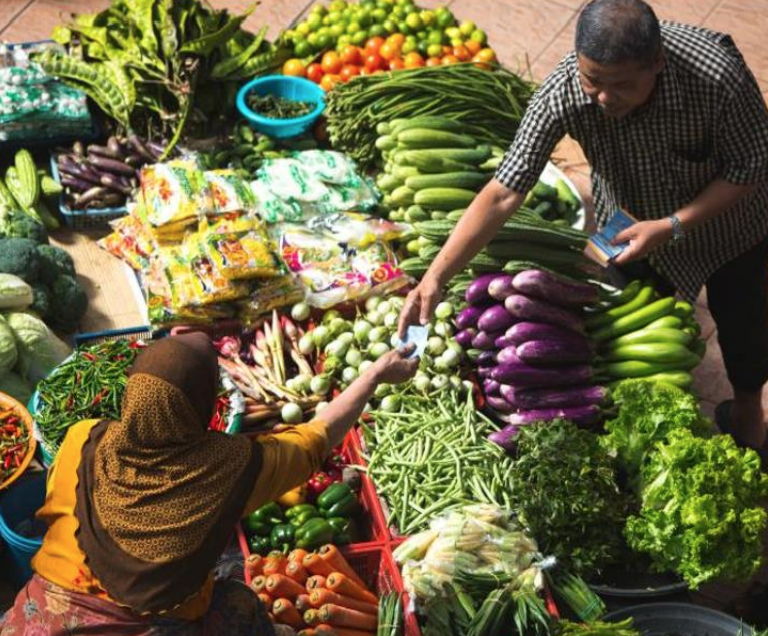
Dr. Rachel Nugent is Vice President for Global Noncommunicable Diseases (NCDs) at RTI International. She leads a research center dedicated to preventing and reducing the health and economic burdens of chronic non-communicable diseases in low- and middle-income countries. Prior to this position, Rachel was Associate Professor in the Department of Global Health at the University of Washington and Director of the Disease Control Priorities Network. She received her M.Phil. and Ph.D. degrees in economics from George Washington University in Washington, DC, USA. She is a member of multiple advisory panels, including the WHO Expert Panel on Management of Cardiovascular Disease, and currently serves on The Lancet Commission on Women and Cancer. In 2018, Dr. Nugent led The Lancet Task Force on NCDs and Economics and served on the U.S. National Academy of Medicine Committee on Global Obesity.
What does ‘food system transformation’ mean to you?
It means that we take the amazing natural resources and incredible know-how that is devoted to agriculture and food, and orient those towards improving human and planetary well-being. In many places, this will change how countries produce and deliver food and how people consume and are nourished by food—and it will change for the better if we are deliberate about our goals, especially equity. The food system we have now has emerged over time as a result of many historical conditions and decisions that we shouldn’t simply keep living with. As it stands, food systems serve many masters but benefit only few. Resources and power are highly concentrated and downstream impacts—on environment, inclusiveness, and health—rarely factor into decisions upstream. These decisions are made by input manufacturers, farmers, transport and energy companies, wholesalers, and retailers that are often part of large conglomerates, and many others. There is rarely input from those who experience the effect of these decisions. This should change if food systems democratize and become more responsive to consumers and, ultimately, the long-term health of the planet.
How can economists contribute to achieving this transformation?
Economists can influence the food system transformation by measuring these downstream impacts and by showing where alternative pathways can produce greater societal benefit. We are well-versed in thinking about externalities of production and behavioral influences on consumption. We can think about and model multi-level complex systems—such as the food system—and make projections about the range of spatial and temporal impacts stemming from various choices within the food system. We can show the outcomes of different scenarios which can inform decision-makers. With these skills, economists can and should make major contributions to how we visualize a transformed food system and, especially, how we create the conditions to achieve it. But we should not try to do this alone. It is important that we interact with climate scientists, agronomists, industrial organization experts, sociologists, and many others —including citizens— to design a more beneficial food system for all. Sounds like pie-in-the-sky, yes. But the will to do this seems to be present and the know-how is certainly in our hands.
Could you tell us about your research on food consumption behavior and health for FSEC?
Along with behavioral economics colleagues from the University of Pennsylvania, I have assessed the evidence on how to achieve healthier diets by changing consumer behaviors. We focused on low- and middle-income countries because there has already been substantial research in high-income countries on these questions and behavior is influenced substantially by context. We wanted to understand how very different contexts might produce different dietary behavior. One of our main findings—and it’s really an indictment of behavioral science researchers—is that the evidence we have about how to influence people’s dietary behavior is not very robust, and not even very creative. Very often researchers are confirming what we already know in different places and not adding much new knowledge. At present, we need to know much more about how to support healthy eating in different settings. We need to modernize our approaches—such as using digital communication techniques and ways of targeting different types of consumers—and we need to use the sophisticated and effective techniques that food and beverage corporations use to shift people’s mindset about healthy eating.
What are the critical challenges for addressing diet-related NCDs in low- and middle-income countries? And how can food systems play a role in improving the burden of NCDs in these settings?
80% of deaths now are from NCDs and 75% of those happen in low- and middle-income countries. Overweight and obesity are among the world’s leading health challenges, with no country successfully reducing its prevalence since 1970. Poor nutrition is the single biggest contributing cause for NCD deaths. The reality is that the nutrition transition has arrived, and we have not been prepared for it.
There is a common misconception that overweight and obesity are a public health challenge only for high-income countries (HICs). However, many of the countries with the highest rates of adult overweight and obesity are middle-income countries and the average annual increase in prevalence of overweight and obesity was over twice as high in low- and middle-income countries (LMICs) as in HICs (2.1% and 1.0%, respectively) between 2000 and 2016. In 2016, more than 1.9 billion adults were overweight, including 650 million who were affected by obesity. Overweight and obesity prevalence specifically among children and adolescents increased from 4% to 18% globally between 1975 and 2016, including a sharp rise in prevalence in LMICs from 2.5% to 17.3%. Most LMIC governments and donors still focus almost exclusively on undernutrition in their strategies and spending. This directs attention in the wrong place for solving food system problems of the future.




